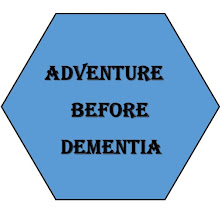Over 140 glaciers flow from the Southern Alps, but only two (Franz Josef and Fox) penetrate as far as the lower rainforests. These two glaciers are part of the 300,000 acre Westland National Park. It's quite a spectacle to see a giant tongue of ice grinding through the temperate rainforest almost to sea level, only a few miles from the sea itself. These glaciers are fed by snow accumulating the high altitude basins where it condenses at a depth of about 70 feet to form blue ice. The ice field flows down hill under its own weight until it reaches an altitude where it melts. (Thanks to the local bookstore for this aerial photo.)
So ... after breakfast we headed north of the village of Franz Josef to take a walk to the base of the Franz Josef Glacier. This glacier is about 7000 years old and is now just a remnant of a much older and larger glacier which originally swept right into the sea. It now extends 7.5 miles from its three feeder glaciers high in the snow fields of the Alps, and today it is 12 miles from the sea and only 3 miles from the village. Some nice waterfalls along the way.
We walked for about a mile through the rainforest to reach the riverbed; from that vantage point we could see the glacier upriver.
We walked along the riverbed to the base of the glacier. Then - with an assist from our guide - we went over the barricade and across the rocks to the very face of the glacier. Here there were several groups preparing to climb the ice for a few hours playing in the snow at the top. We can't say that we climbed the glacier, but we did let him know we were there.
We went back to town in hopes of making a helicopter ride to the top, but the clouds rolled back in and we were grounded. So, we settled for lunch in the village cafe and a little bird watching.
Up in the tree is the New Zealand Wood Pigeon, at 16" height, it is the world's largest pigeon. On the ground is a pair of Moas - the 9-foot tall flightless wonder that fed the earlier Maoris before being hunted to extinction. It’s hard to believe that any bird was so tall.
And then we were back on the coach to head south along the coast. It was a pretty drive - lots of sheep farms, rivers, and rolling hills. Our mid-afternoon stop was in Hokitika, known as the heritage and cultural center of the West Coast. We're here because Hokitika is home to New Zealand's finest jade. Along with many jade carvers, Hokitika is a haven for many other artists and craft people - wood work, silk painting, bone carvings and shell carvings.
We went to Westland Greenstone to learn about "Pounamu," generally known as greenstone or jade. Jade is found in rivers as nondescript boulders and stones which are difficult to identify without cutting them open. The jade stone can take an edge as tough as steel and can be found in a wide range of green colors. It was well-suited to making tools, weapons, and personal ornaments.
Jade is considered a ‘taonga’ or great treasure to the Maori people. In their treaty with the government, the Maori were granted rights to all greenstone in the country. The Maori people fashioned beautiful pendants representing the fishhook, the fern fiddlehead, the sweet potato, and other items important to their culture.
The jade was pretty, but the real excitement was down the street at the Sock Machine Museum. What a marvel – a room full of sock-knitting machines over a hundred years old – a major, not-to-be-missed tourist attraction. They also had some nice stuff for sale …
On the way out of town, we crossed over one of the most interesting bridges we've seen in New Zealand. There are loads of one-lane bridges, and these seem to work well in rural areas where there's not much traffice. But this one takes the prize: it's a one-lane bridge shared by cars and trains - note the train tracks running down the middle. We never did understand exactly how this would work, but everyone was clear that the train would have the right-of-way.














